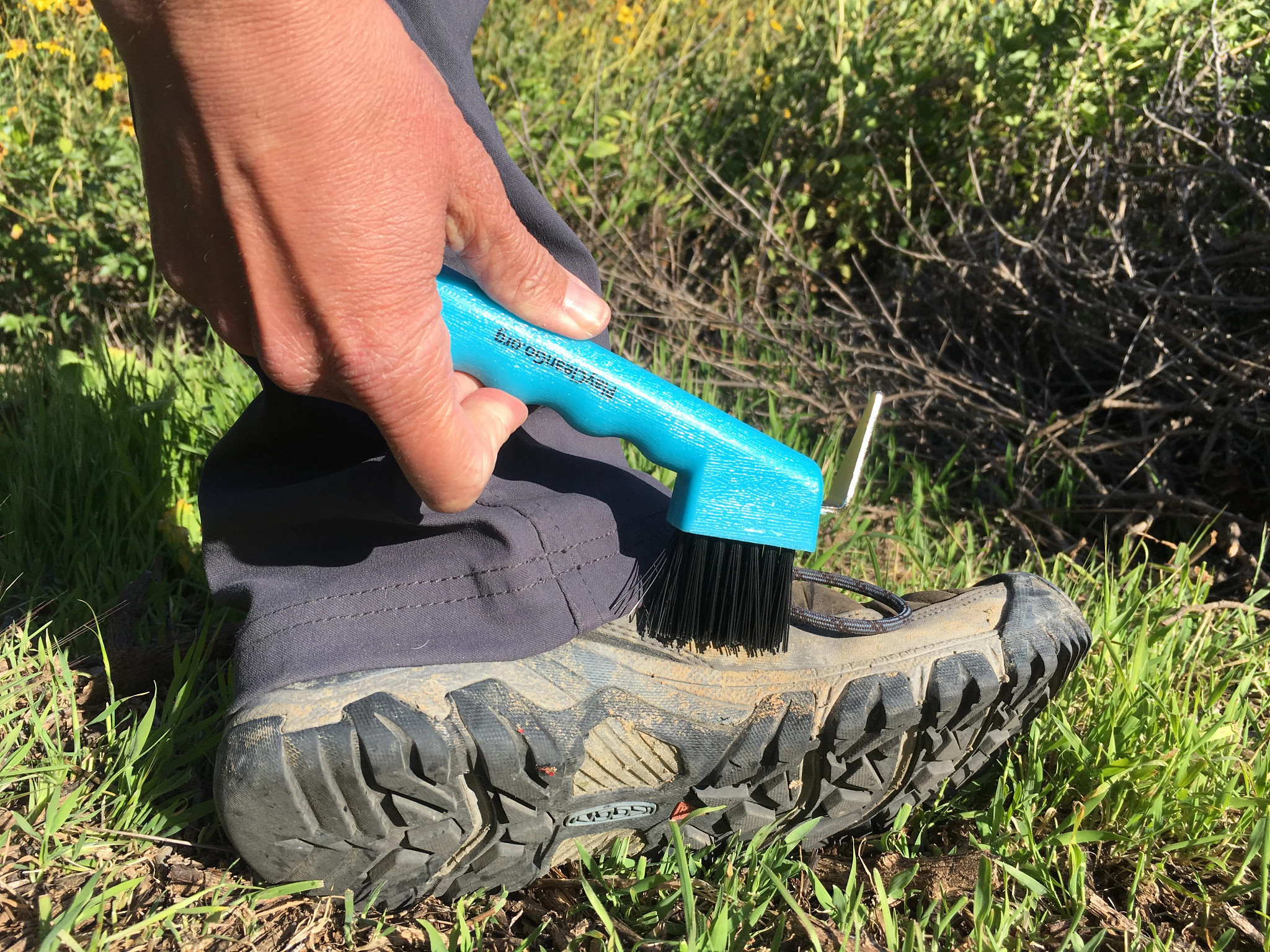Contact: Tara Bergeson, DNR Invasive Species Team Coordinator
Tara.Bergeson@wisconsin.gov or 608-516-0487
DNR Seeking Public’s Help To Prevent Spreading Invasive Species
 June is Invasive Species Action Month in Wisconsin, and easy steps like brushing mud and dirt from boots before hiking in a new area can help prevent accidentally spreading the seeds of invasive plants.
Photo credit: North American Invasive Species Management Association
June is Invasive Species Action Month in Wisconsin, and easy steps like brushing mud and dirt from boots before hiking in a new area can help prevent accidentally spreading the seeds of invasive plants.
Photo credit: North American Invasive Species Management Association
MADISON, Wis. – June is Invasive Species Action Month, and the Wisconsin Department of Natural Resources (DNR) is asking Wisconsinites and visitors to take simple precautions to avoid spreading invasive, nonnative plants and animals in our woods, waters and land year-round.
Invasive species are nonnative plants, animals and diseases that cause great ecological, environmental or economic harm. Some have already been found in Wisconsin, while others pose a large risk of surviving and causing problems if they are introduced and become established here.
The state’s invasive species rule (ch. NR 40, Wis. Adm. Code) makes it illegal to possess, transport, transfer or introduce certain invasive species in Wisconsin without a permit. The regulations designate which species are Restricted or Prohibited based on factors including the degree of harm they may cause to people, the native ecology or the economy.
How You Can Help
To prevent the establishment and spread of invasives, the DNR offers the following tips:
- Hikers and campers should clean mud and dirt off their shoes and remove seeds and burs from their clothing before visiting other places. Taking these simple steps can prevent inadvertently moving invasive plants to new areas via seeds that may be on clothing or in the mud or dirt.
- Firewood is a significant pathway for the movement of many invasive insects and pathogens such as emerald ash borer, gypsy moth and oak wilt disease. To help protect the state’s trees where you live, play or camp, use local firewood to avoid moving pests to new places.
- Anglers and boaters can help protect vulnerable areas from aquatic invasives such as quagga and zebra mussels, Eurasian water-milfoil, New Zealand mudsnails and Asian clams by cleaning recreational equipment and gear after every use. Inspect gear for dirt, mud, seeds and other debris and remove as much as possible.
- Drain all water from gear before leaving a site and wash it with 140-degree water or steam to remove invasives too small to see. Drying gear for five or more days between use also helps destroy invasive organisms. For more information, check the DNR’s aquatic invasive species webpages.
- Gardeners are encouraged to plant and promote beautiful native plants that can benefit pollinators, birds and other wildlife or traditional gardening plants that are noninvasive. The DNR’s Plant Native Plants webpage has many great informational resources to get started.
- Gardeners can also look for and remove potential problem plants, including purple loosestrife, hairy willow herb, butterfly dock, yellow iris, nonnative phragmites (common reed), lesser celandine, water hyacinth, water lettuce and frogbit.
Invasive Species Action Month is promoted by the Wisconsin Invasive Species Council, which the Wisconsin Legislature created to assist the DNR in establishing a statewide program to control invasive species. The Council is now assessing species currently regulated and additional species that might be considered for future regulation.

